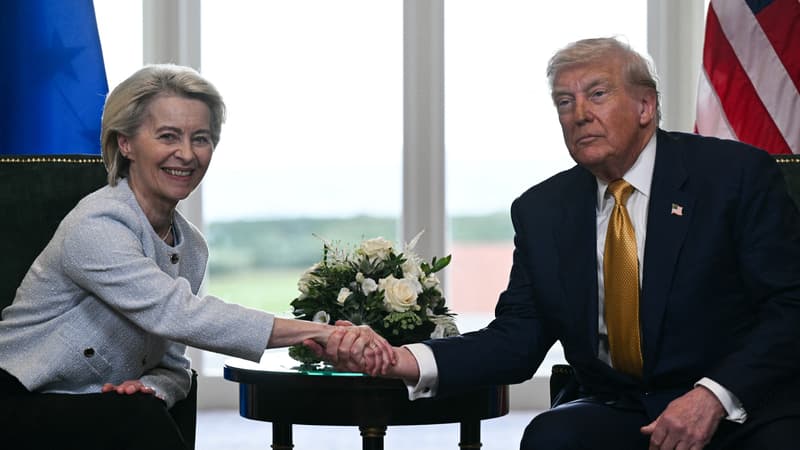15% of customs duties, a unique rate aimed at the vast majority of European Union assets in the United States. This is in a broad scheme of what the agreement between the United States and Europe contains.
In detail, these rates will refer to a large majority of the sectors, especially those where France is an exporter: pharmaceutical industry, luxury, perfumes, drinks, naval industry.
On the European side, difficult to see a victory: this new rate is comparable to the 10% surcharge established during the transition negotiation phase. It is also much higher in practice than the average rate of 1.5% applied before “day of liberation”.
“15%is not insignificant, but it is the best thing you can get,” said Ursula von der Leyen at the press conference. The United States has shown the threat of a 30% rate in recent weeks.
But a 15%homogeneous rate is far from being trivial when the United States is the first EU commercial partner for its exports and the second EU (after China) for its imports.
Among the sectors that avoid the worst: the automotive sector currently affected by a 25% surcharge will see the applicable rate reduced to 15%. For steel and aluminum they have already reached up to 50%, it is not clear if the rate will be maintained or decreased. While the press release of the president of the commission indicates that “customs duties will be reduced” for these industries of overcapacity victims and that quotas are provided, Donald Trump seems to indicate that the high rates would remain.
Aeronautics, certain exempt chemicals or agriculture
But some sectors are making even better, benefiting from a total exemption. These sectors will benefit from “zero rates for zero” because they are considered “strategic” for the US territory. There too, the press release of the presidency of the European Commission is not clear. The aeronautical and its components would worry, a great winner of the agreement, who saw him as a return to an agreement signed in 1979.
Difficult to guess at this stage what these natural resources or these essential raw materials would be.
Especially since the United States continues its commercial surveys and other rates could be kept for semiconductors and pharmaceutical products, despite what is announced in the press release of the Presidency of the Commission. That does not exclude access to optimism to expand this first list of exempt products in the coming weeks.
At this stage, the list of exemptions mentioned really does not correspond to the interests of Europeans. Despite the lobbying in the sector, at this stage alcohols, wines and spirits would be well affected by the unique rate of 15%. But in the absence of company details, a framework agreement must be seen in the agreement signed on Sunday. The categorical details will be later negotiations.
Source: BFM TV


